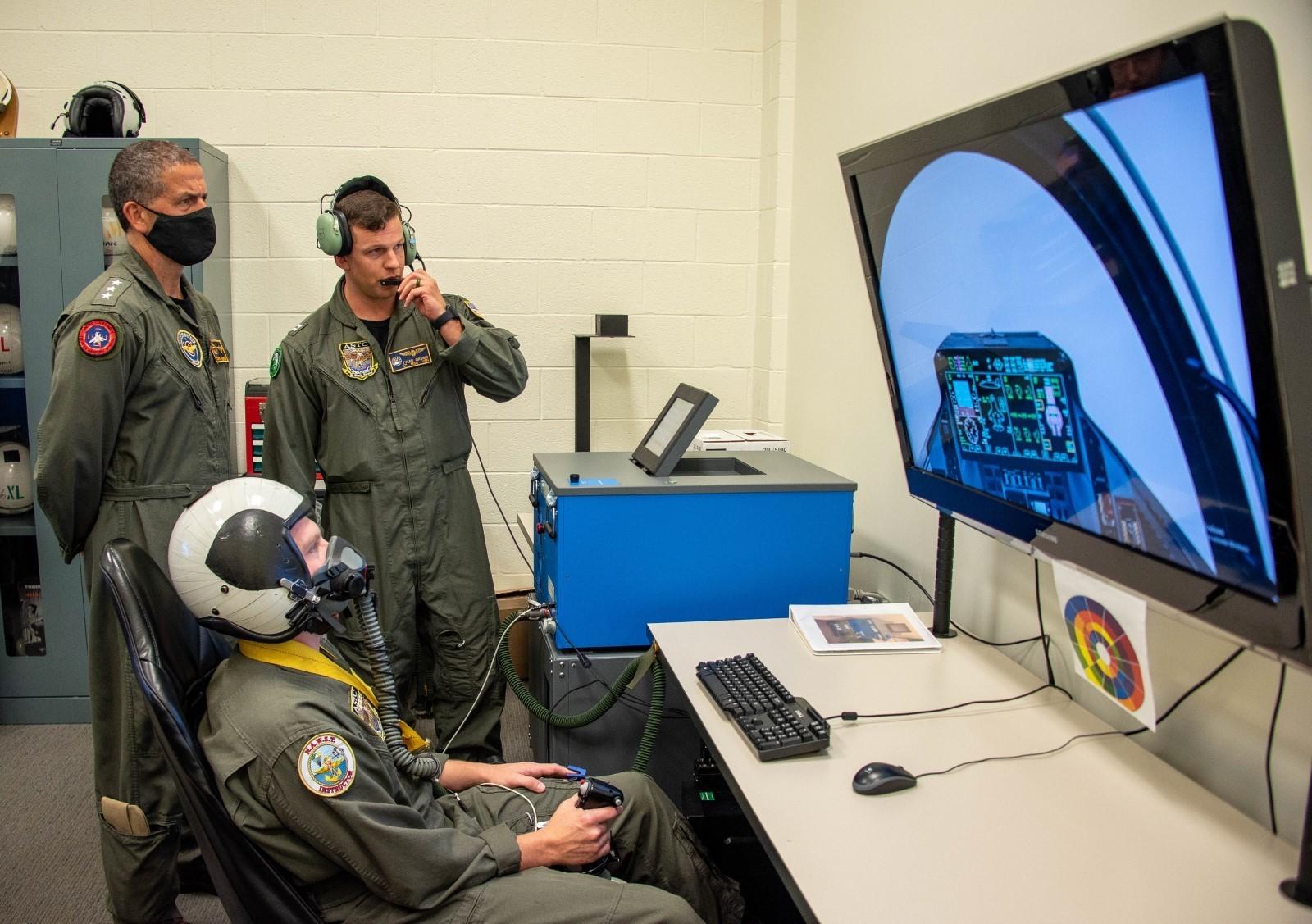Naval Aviation Training Systems and Ranges Program Office (PMA-205) recently completed the installation and demonstration of the new Mask-on-Breathing Device (MOBD) trainer on July 7, 2022, at Patuxent River , Maryland.
The MOBD trainer allows Tactical Jet Airmen to experience unique breathing-related distress symptoms that can occur during flight, which could lead to potential Physiological Episodes (PEs), one of the primary safety concerns of the Marine.
Flight physiologist Lt. Tyler Grubic demonstrated the effect of different respiratory distress profiles on the subject, Electronic Warfare Systems Specialist 1 Shawn Bell. On hand for the demonstration were NAVAIR Commander Vice Admiral Carl Chebi, Deputy Program Manager for Common Aviation Systems and Commercial Services Marci Spiotta and members of the Air Force Survival Training Program team. Naval Aviation PMA-205 (NASTP).
“When I talk about the importance of why we do what we do at NAVAIR, it’s exactly that; making sure to prepare our naval aviators before they arrive in the fleet and bring our sons and daughters home safely,” Chebi said.
The NASTP team developed the MOBD trainer, which replaces and improves the old oxygen reduction breathing apparatus by using a demand airflow trainer compatible with the onboard oxygen generation system that the NASTP found in tactical aircraft.
“This revolutionary training device allows Naval Airmen to recognize how they personally respond to respiratory distress and allows them time to perform emergency procedures before becoming incapacitated,” said PMA-205 program manager, the Captain Kevin McGee.
The PMA-205 has delivered 10 MOBD devices to date. A total of 35 trainers will be installed in the country’s eight aviation survival training centers by November 2022.
About the PMA-205
The PMA-205 provides full lifecycle acquisition of naval aviation training platforms, general training systems, training range instrumentation systems, and distributed mission training centers to deliver Navy and Marine Corps pilots, Navy flight officers, aircrew and maintainers the required training equipment to provide superior capability and operational readiness. The program office manages flight simulators, part task trainers, maintenance trainers, airborne and underwater training range instrumentation, threat systems and associated programs to ensure optimum performance for naval aviation.

